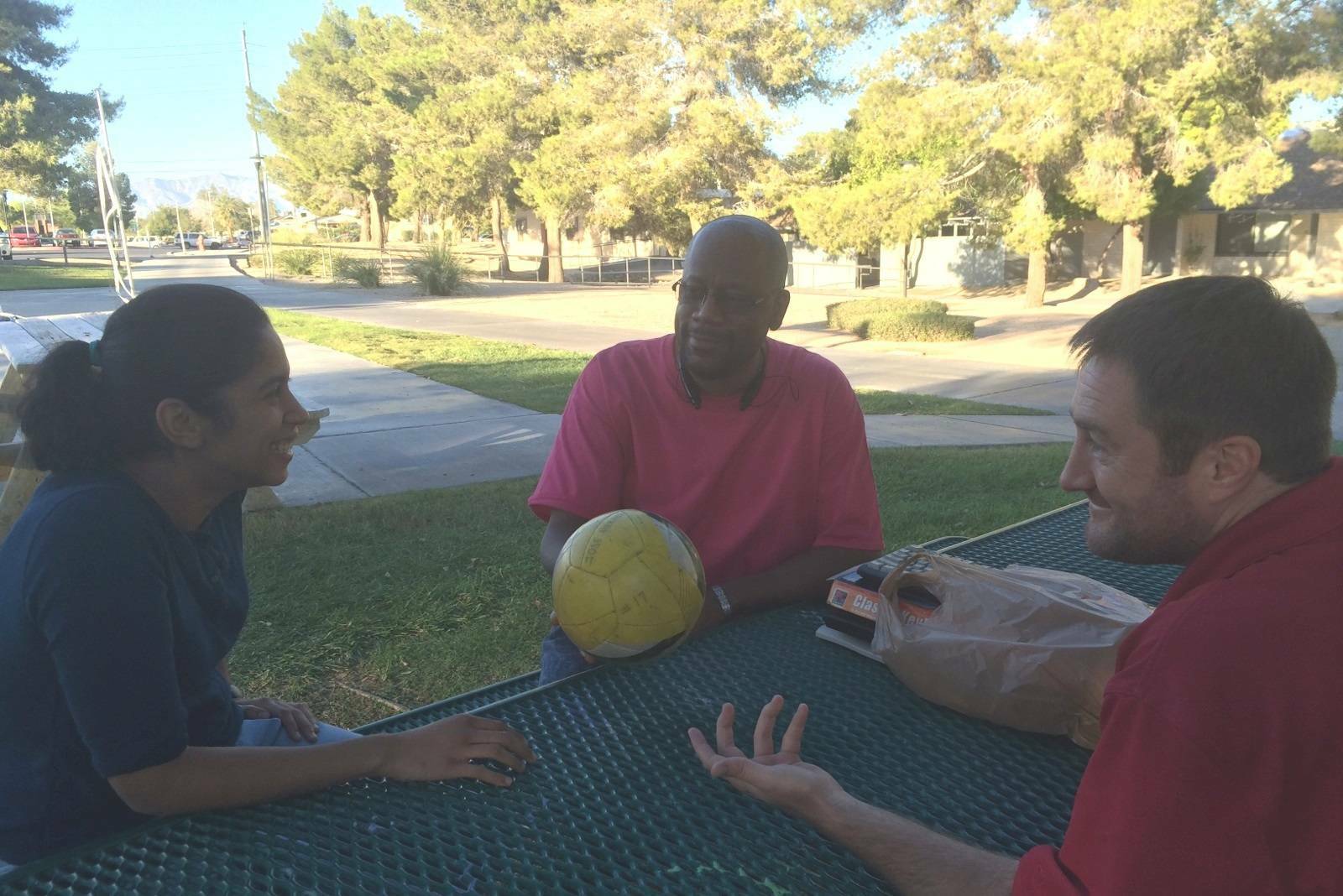Project Summary
The goal of this project was to increase the level of family participation in their child’s treatment. Specifically, we wanted to determine if having families sign a participation agreement prior to admission and reinforcing their engagement would have an impact on the level of family involvement. We observed family participation rates in orientation, weekly shadowing in the home, attendance at child and family team meetings, involvement in family therapy, weekly phone contact with the child, weekly phone contact with the supervisor and staff, attendance at medication reviews, and participation in family checkup (parenting program), participation in pre and post therapeutic pass meetings, attendance at school meetings, and participation in transition of youth to home. It was found that providing clear expectations of the parental involvement, regular contacts with the family, and maintaining the stability of the program contributed to the level of family participation in the child’s treatment.
Project Context
The project was conducted in a program within the Division of Child and Family Services that includes 5 treatment homes. The program serves youth between the ages of 6 and 18 who meet the criteria for being severely emotionally disturbed. The average length of stay is 6-9 months. We observed 9 youth in parental custody that were in, or admitted to the program, as of June 1, 2015 thru March 31, 2016. Clients in our program have been successful largely attributed to the program structure, consistent teaching of 3 target skills to include following instructions, expressing feelings and being able to accept feedback. Previously, although successful gains have been made by youth while in treatment, their ability to transfer newly acquired skills into their next living situation has been minimal resulting in high rates of repeat referrals to the program. Referrals to our program are often a result of extreme behavioral issues that have surpassed the parent’s ability to keep the youth or others safe in the home. The current study intended to capitalize on the current strengths of the program and to enhance the youth’s ability to transfer skills by increasing family participation.
Project Goals, Methods and Outcome
Significance, Background, and Research Goals
Research findings have indicated that family participation had positive effects on youth behaviors and their transition to home (Landsman, Groza, Tyler, & Malone, 2001). Family activities that focus on skill building for parents to gain child’s cooperation, increase communication, and identify realistic expectations of child’s abilities also help staff members ascertain positive attitudes about families’ potential role in successful treatment (Baker, Heller, Blacher, & Pfeiffer, 1995). Likewise, activities that provide increasing opportunities for family to enjoy each other during family visits have also been found effective for balancing stress with recreation (Baker et al., 1995).
Clients in our program have been very successful largely attributed to the program structure, consistent teaching of the target skills and ongoing feedback. However, their ability to transfer newly acquired skills into their next living situation, whether it be home or a new placement, has been minimal resulting in high recidivism to the program. In this study, we focused on increasing family participation in an effort to help the youth build transferable skills for behavioral management.
We anticipated that by providing clear expectations of the parental involvement prior to admission, and re-enforcing their ongoing participation, there would be a significant increase in the quantity and quality of parent-child contacts and interactions.
Method
Participants
Of the 9 youth that participated in the study, 3 were already in the program and the remaining 6 were admitted during the project. They were all in parental custody and 5 of them were in the teen boy home, 2 in the teen girl home and one in the pre-teen girls’ home. Two of the youth were discharged prior to the end of the project but had been in the program for at least 9 months. Four of the youth were being raised by adoptive parents after being placed in the system for abuse or neglect, 2 of the youth were being raised by their grandparents after being removed from their parents, and 2 youth were being raised by at least one biological parent.
Measure
Included in our intake packet was the DSM 5 Level 1 Cross-Cutting Symptom Measure to determine the presence of any symptoms specific to psychiatric concerns or drug usage. While the clients were in the program, the following data were also gathered: (a) phone calls with the child, (b) phone calls with the supervisor, shadowing of staff, attendance at doctor’s appointments, (c) involvement in family therapy, (d) attendance at medication reviews, (e) attendance at school appointments, and (f) participation in pre and post therapeutic pass conversations and other scheduled meetings. Upon discharge, parents completed a parent satisfaction survey regarding their thoughts about treatment. In addition, the previous two years of parental satisfaction data were utilized for comparisons.
Procedure
All parents were given an orientation to the program upon their child being admitted and an agreement listing the activities available for family/parental participation. Parents completed the initial referral form to include behaviors of concern and history of treatment and the measure in the intake packet (see Measure). After signing the participation agreement, parents were also involved in the development of the treatment plan which included the behavior of concern, the interventions being applied, and the time frame for anticipated progress or review of the goals. Ongoing review of the treatment plan and progress was completed during monthly Child and Family team meetings, discussed during weekly updates, and shared during pre and post pass discussions.
Parents were invited to attend all school meetings, medication reviews and continue participation in family therapy. During home passes, families were encouraged to practice the areas of “following directions, accepting feedback, and expressing feelings,” as these skills were being taught through the program. They were also reminded to try to participate in activities they found enjoyable to balance the stress they had experienced prior to the youth being admitted to treatment. Finally, they were encouraged to actively participate in the transition process when their child was nearing discharge.
Results
The study was initiated based on the ongoing struggle to get families involved in their child’s treatment. Previously, the program was viewed as exclusive treatment for the youth, with the expectation that their individual progress would result in a successful transition back into the family home. Research has shown that the role of family in the treatment process has been emphasized in recent years, and youth in programs that engage parents in service planning and delivery tend to have more favorable outcomes (Robst, Rohrer, Dollard, & Armstrong, 2014). Previous observations of limited family involvement and the repeat referrals shortly after discharge provoked the need for this study to be completed and changes to be identified for our program.The following results reflect the level of participation in the activities by the 9 families involved in the study.
- Orientation – 77%
- Weekly shadowing in the home – 11%
- Attendance at Child and Family Team meetings – 100%
- Involvement in family therapy – 66%
- Weekly phone contact with the child – 77%
- Weekly phone contact with the supervisor/staff – 88%
- Attendance at medication reviews – 100%
- Participation in Family Check Up (parenting program) – 50% (at the time of data collection)
- Participation in pre and post therapeutic pass meetings – 100% for the 7 youth that went on passes
- Attendance at school meetings – 88%
- Participation in transition of youth to home – 77% (at time of data collection)
In an effort to improve participation in current program elements, we did not have an accurate comparison group from previous years. In an effort to derive the best results possible, we utilized percent rates from related items on our “Parent satisfaction Survey” in the current year, compared with the previous two years, as an outcome measure for the study.
Item Year 2013 2014 2015
- Services were provided in a safe, comfortable, well-cared-for environment 75 100 100
- I felt my child and family had someone to talk to when troubled 75 86 100
- Staff treated our family with respect 75 100 100
- My child gets along better with family members 75 100 100
- I helped to choose my child and family’s services 100 83 100
- I helped to choose my child and/or family’s treatment goals 75 100 100
- I participated in my child’s and family’s treatment 75 100 100
- I am learning helpful parenting skills while in services 67 100 80
Conclusions
- Providing clear expectations of the parental involvement prior to admission contributed to an improvement in the level of family participation.
- Providing regular contacts with the family via phone, text, or e-mail in efforts to inform progress updates, and to provide reminders of upcoming events/appointments and incidents, resulted in parents maintaining a stronger connection to the youth and his or her treatment evidenced by attendance at activities and appointments.
- Regular communication created a working relationship between the staff and the parents and provided a safe and supportive environment for parents and children to engage with one another and practice the skills being learned in the program on home passes.
- We were unable to coordinate the family fun nights, and regularly schedule and support the shadowing as originally intended. In an effort to further support positive outcomes, these are significant elements that would need attention in the future.
This particular project was designed to explore factors that could contribute to increased participation in treatment, with the expectation that these factors would contribute to better outcomes in successful transitions home. We had initially discussed providing incentives such as board games and gift certificates to encourage ongoing participation and family activities in the community during passes. Because family fun nights were not incorporated during the time the study was conducted, the plan was aborted. We would like to repeat the study by (a) incorporating the shadowing, family fun nights, and incentives to see if participation increases as compared to the current findings and (b) developing an outcome component linking family participation and the success of the youth‘s transition home.
References
Baker, B., Heller, T, Blacher, J., & Pfeiffer, S. (1995). Staff attitudes toward family involvement in residential treatment centers for children. Psychiatric Services, 46, 60-65.
Landsman, M. J., Groza, V., Tyler, M., & Malone, K. (2001). Outcomes of family center residential treatment. Child Welfare, 80, 351-379.
Robst, J., Rohrer, L., Dollard, N., & Armstrong, M. (2014). Family Involvement in treatment among youth in residential facilities: Association with discharge to family-like setting and follow- p treatment. Journal of Emotional and Behavioral Disorders, 22, 190-196.
To cite this work, please use the following reference:
Miller, S. (2016, June 10). Family involvement in residential group home treatment of the youth. Social Publishers Foundation. https://www.socialpublishersfoundation.org/knowledge_base/family-involvement-in-residential-group-home-treatment-of-the-youth/

